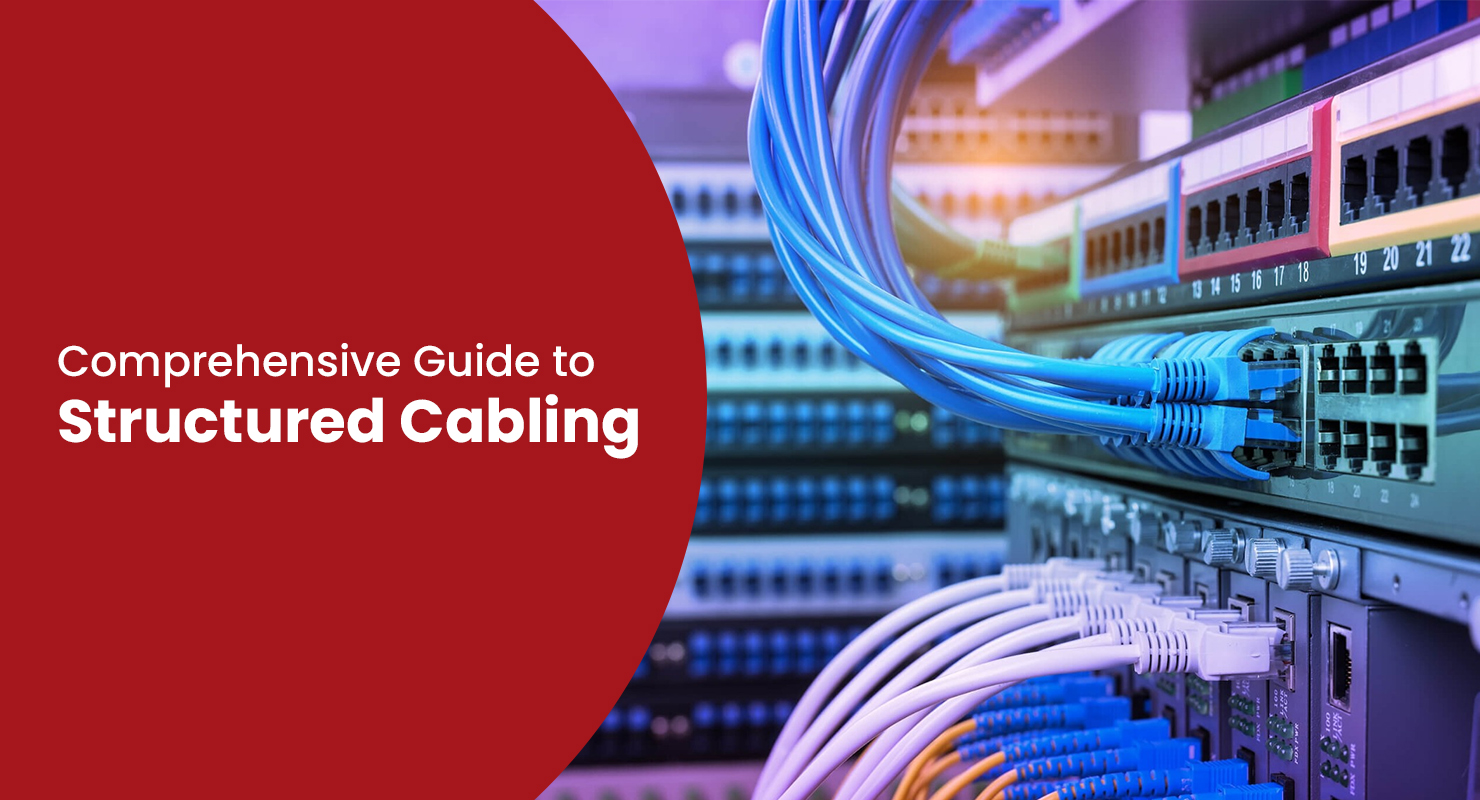Demystifying Structured Cabling: A Must-Have for Business Infrastructure
When it comes to running a successful business, ensuring a robust infrastructure is paramount. This entails establishing a dependable network and implementing high-quality wiring. Among the crucial elements to achieve this, Structured cabling stands out as a fundamental requirement.
In this comprehensive guide, we delve into the world of structured cabling, shedding light on its significance, installation procedures, and the advantages it offers. Whether you’re a novice or well-versed in the subject, this comprehensive guide will provide valuable insights. So, let’s delve into the intricacies of structured cabling and discover its immense potential for your business.
What types of cabling are included in a structured cable environment?
Common Cabling Types in Structured Cable Environments
Structured cabling environments encompass a range of cable types, each serving specific purposes. Let’s explore the most prevalent cable types found within such setups:
- Ethernet Cables: These cables facilitate the connection between computers and the network, enabling data transfer and communication within local area networks (LANs) or wide area networks (WANs).
- Fiber Optic Cables: Utilized for high-speed data transmission, fiber optic cables employ optical fibers to transmit data using light signals. They offer exceptional bandwidth and are resistant to electromagnetic interference, making them ideal for long-distance communication and high-bandwidth applications.
- Coaxial Cables:Often used to connect devices like televisions and computers to the internet, coaxial cables are designed to transmit high-frequency signals with minimal interference. They are commonly used in cable television (CATV) systems, broadband internet connections, and CCTV systems.
- Twisted Pair Cables: Twisted pair cables consist of pairs of insulated wires twisted together. They are widely deployed for various applications such as telephone lines, data networks (Ethernet), security systems (alarm systems), and audio systems (paging/music/PA systems). These cables offer good noise immunity and come in two main categories: Unshielded Twisted Pair (UTP) and Shielded Twisted Pair (STP).
- AC Power Cables: While not specifically a data transmission cable, AC power cables are an integral part of a structured cabling system. They provide electrical power to the network equipment, ensuring its proper functioning.
- Special Data Transmission Cables: Certain specialized cables may be used for specific data transmission requirements. Examples include Serial cables (RS-232), HDMI cables for audio and video transmission, and USB cables for connecting peripherals to devices.
Understanding the distinctive roles of these cable types is crucial for building a reliable and efficient structured cabling system that caters to your business needs.
The Importance of Structured Cabling
Structured cabling serves as the backbone of a well-designed network infrastructure. Here are several reasons why businesses need structured cabling:
- Scalability and Flexibility: Structured cabling provides a scalable solution that can accommodate the evolving needs of a business. It allows for easy additions, modifications, and relocations of network devices without disrupting the entire system. This flexibility is especially crucial for businesses experiencing growth or those that frequently rearrange their workspace.
- Improved Performance and Reliability: A structured cabling system ensures consistent and reliable performance of network connections. By using standardized cabling components and installation practices, it minimizes signal interference, reduces downtime, and optimizes data transfer speeds. This leads to enhanced productivity and efficiency within the organization.
- Simplified Management and Troubleshooting: With structured cabling, the organization and management of network infrastructure become more streamlined. Clear labelling, organization, and documentation of cable connections simplify troubleshooting and maintenance tasks, reducing the time and effort required to resolve issues. This results in quicker problem resolution and improved network uptime.
- Support for Multiple Applications: Structured cabling supports a wide range of applications and technologies, including data, voice, video, and multimedia services. It enables the integration of various systems and devices, such as computers, IP phones, security cameras, wireless access points, and audiovisual equipment. This versatility ensures compatibility with current and future technologies, eliminating the need for separate cabling systems for different applications.
- Cost Efficiency: While the initial installation cost of structured cabling may be higher compared to ad-hoc cabling approaches, it proves cost-effective in the long run. The standardized infrastructure simplifies maintenance and reduces the risk of costly errors or performance issues. Additionally, structured cabling’s flexibility allows for easier system upgrades and expansions, eliminating the need for significant infrastructure overhauls in the future.
- Future-Proofing: Investing in structured cabling ensures that your network infrastructure is future-proofed. It can support emerging technologies and higher data transfer rates, providing a solid foundation for future advancements without requiring extensive rewiring.
In summary, structured cabling offers businesses a reliable, scalable, and efficient network infrastructure that promotes performance, flexibility, and ease of management. It is an essential investment for businesses seeking a robust and future-ready communication backbone.
Are you ready for a structured cabling solution for your business?
Structured cabling offers numerous advantages for businesses of all sizes. It ensures that your network operates at its best and maintains reliability. By implementing a structured cabling system, you can experience improved network performance and increased dependability.
Additionally, structured cabling can enhance the value of your property and business, particularly if you plan to sell or merge in the future. It demonstrates a well-organized and modern infrastructure that appeals to potential buyers or partners.
If you’re interested in harnessing the benefits of structured cabling, Pulse Tech Corp is here to assist you with a no-obligation consultation. We’ll evaluate your specific requirements and recommend the most suitable solution.
With a modest investment of effort, you can establish an efficient and organized network that will support your business for years to come. Don’t hesitate to take advantage of structured cabling for a network that propels your business forward.


